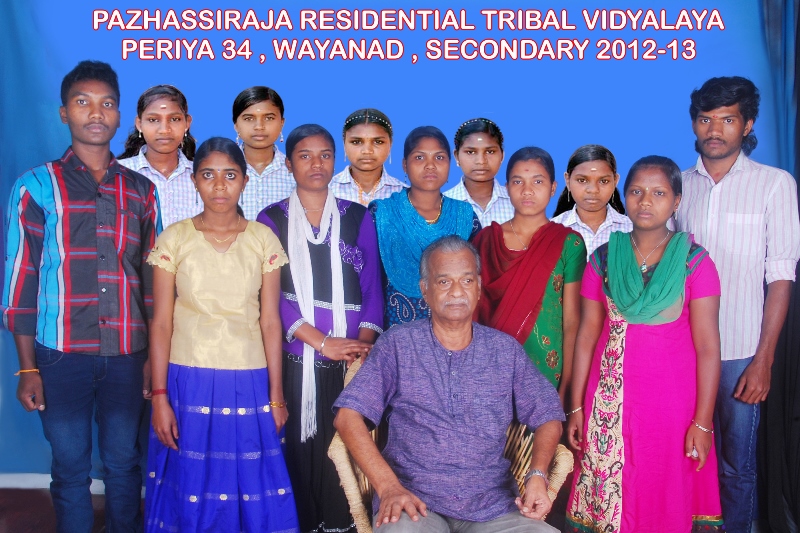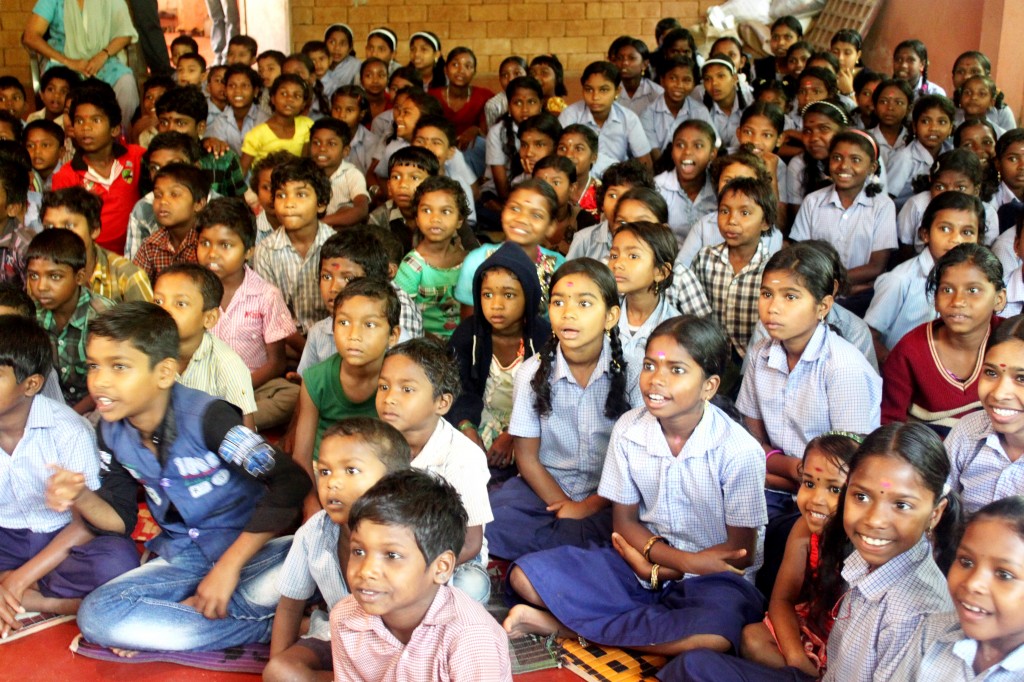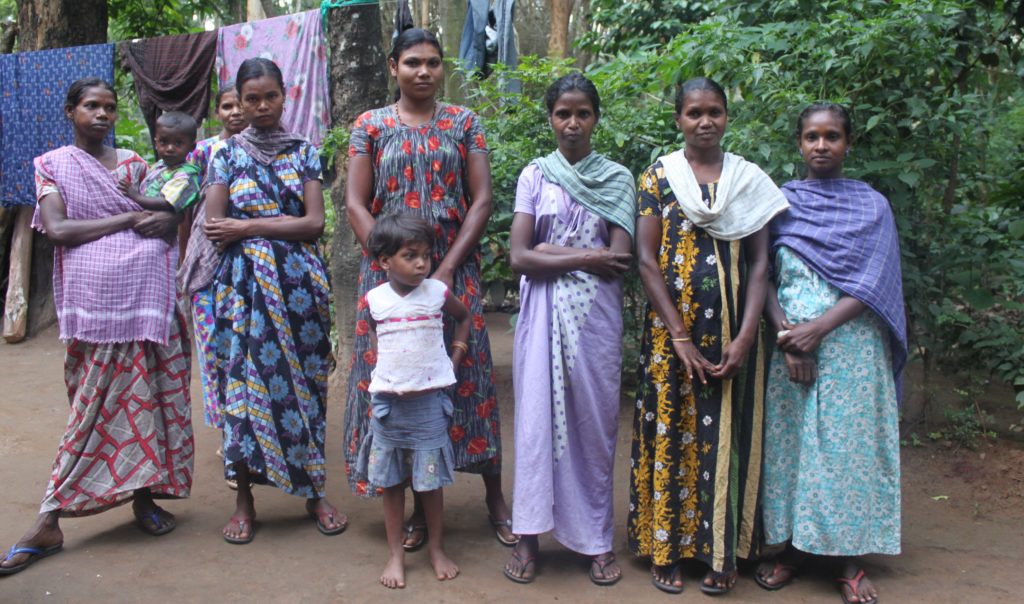Trip report by Saril Valiyaparambil – July 2014
(VOC board member)
Visiting Pazhassi Raja Residential Tribal school has been one of my top priorities every time I go to India. This year’s trip, which I undertook along with my family, was a special one. I was able to interact a lot more with the children and got an opportunity to spent some time with their parents at a tribal colony inside Muthanga forest.
Soon after our arrival at the school, I led a personality development workshop for the high school children. We discussed various aspects of leading a socially responsible life – which included truthfulness, non-violence, simple living, helping others, keeping good company, environmental awareness etc. There were videos accompanying the discussion and this, I felt, helped deepen the impact of the message conveyed. After the workshop, all the children came together and I showed them some funny animal videos and few other videos showing the diversity and beauty of our earth. The children really enjoyed watching these and it was wonderful to see big smiles on their innocent faces. I also showed them the documentary that we (Voice Of a Child) made about their school. The documentary had several video clips that were recorded during my last visit to the school (Jan 2013). The children were very happy to see some of their own friends and teachers on the big screen.
In the afternoon, all of us interacted with the children and visited their classrooms. All the teachers participated in a staff meeting that was arranged. During the meeting, I informed the teachers about the work that the VOC volunteers are doing to support the school. I shared the story of one of our committed team members, Sija Krishnan and her family. Sija’s 8 year old son was very kind to use his birthday as an opportunity to fund-raise for the school. In another instance, Sija and her friends cooked food and sold them at 2 music recitals and raised funds. Kind deeds such as these and many other untold ones are what are helping us to financially support the school. The meeting was used to inspire the teachers to continue the good work that they are already doing.
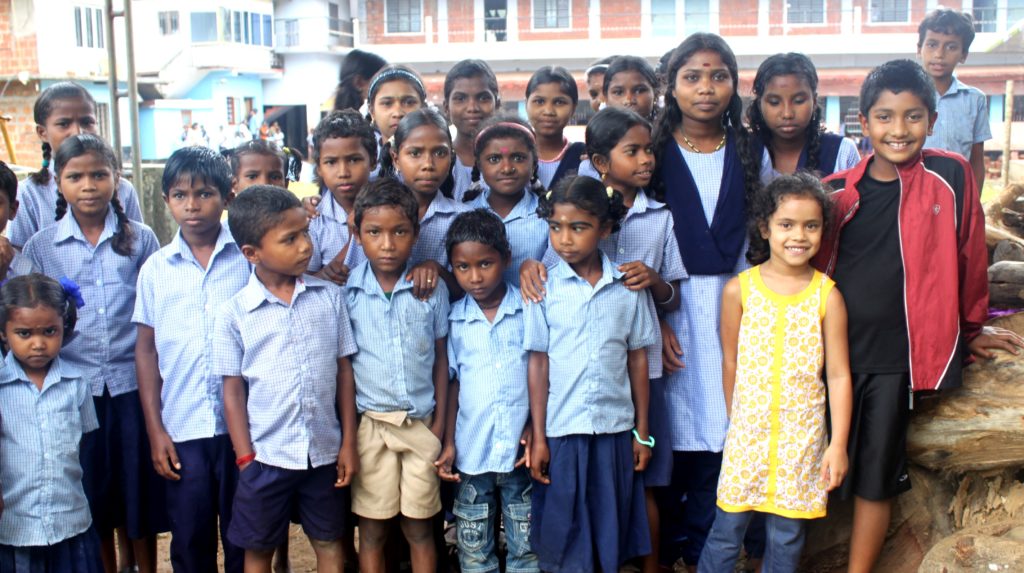
Shinoj, who is the school manager, showed us the vocational education class room, where the book binding and sewing machines were located. He mentioned that the bamboo craft and carpentry programs are on hold due to lack of funds to pay the instructors. We discussed some means of increasing the income generated from the school by expanding the area used for agriculture. Some of the senior children put on a show of their ‘Kolkkali’ skills, a fascinating traditional stick dance.
Two of the lady teachers are alumni of the school. They attended the school at a time when girls from their community were not allowed to go to schools. These two teachers shared their experience of working at the school, talked about their immense gratitude to Dr. Nambiar for transforming their lives and their desire to pay-it-forward for the next generation. In addition to the two teachers, two hostel wardens are also alumni of the school.
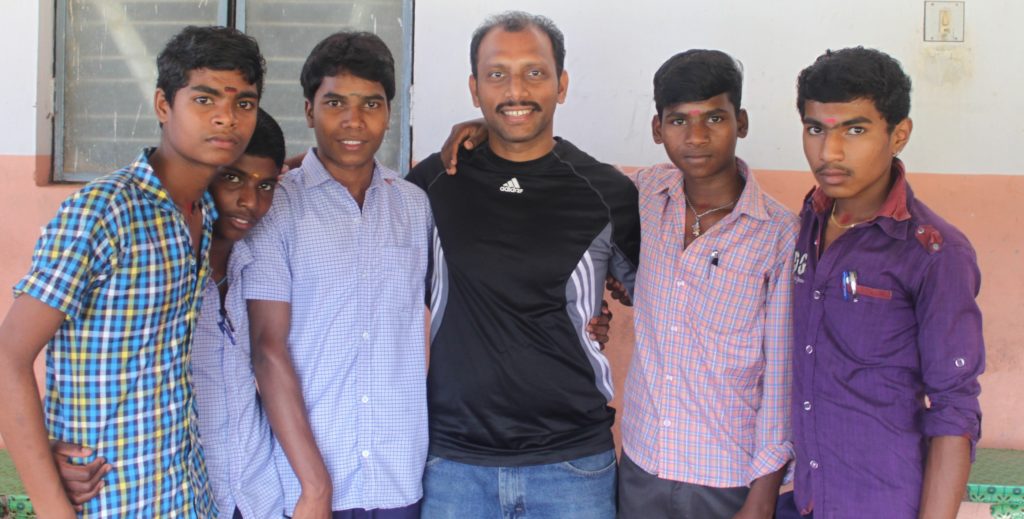
I was very thrilled when I came to know that Dr. Nambiar had arranged a meeting with some of the parents. During my past visits to the school, I had never traveled to the homes of the children who study at Pazhassi Raja School. This is a residential school and the children go back home only during their vacation periods. Our meeting was scheduled at a tribal colony in the Muthanga forest, close to the Karnataka border, located about 60 KM from the school. Muthanga forest is part of the protected wildlife sanctuary in Wayanad and was in news in 2003 for the large scale conflict between the tribal community and the police. The people were fighting for their land ownership rights at that time.
At about 3pm, Dr. Nambiar, Shiju (senior teacher), Shinoj (school manager) and myself started our trip to Muthanga forest. On our way, we were joined by two ladies who worked as ‘promoters’ in the tribal colony that we were about to visit. Promoters are appointed by Government or NGO’s and are usually the educated people among the tribal community. They work as mentors for the tribal families and their job includes helping them to get access to various welfare schemes offered by the Government and looking after their primary health and education related matters. After driving for about two and half hours, we entered the Muthanga forest range. The van that we were traveling got stuck in the mud and we had to set off on foot for the last part of the journey. We were about 30mins past the scheduled meeting time and hence were a bit concerned if the parents would still be waiting for us.
The meeting was arranged in front of the house of one of the parents. There were about 20 women waiting for us and 3 or 4 men. Dr. Nambiar spoke to the parents about the importance of education, the need to ensure that they sent their children back to school at the end of their vacation period etc. I spoke to them about education and its necessity in this day and age. Later on, while we interacted with each other, some of the parents shared their expectation from their children which I had the chance to record on video. I discussed the condition of these families with the two promoters. What I learnt that day was an eye opener for me. Many of the women are widows – as many men die before they reach 40 or 50 years old. They die early due to uncontrolled alcohol and drug use, harmful work conditions in the farms or due to wild animal attack. Many people (including women) are addicted to alcohol and that wreaks havoc in their families. Sighting of wild animals such as elephants, tigers and bears are not surprising for them. I could see that they live in simple houses (made of bricks), which I heard were built for them by Government. Earlier, they used to live in huts made of bamboo sticks and leaves and the living conditions were very bad, especially during the long monsoon season. The land area around the house was neatly kept. They do not grow any food in their land due to fear of attracting wild animals. We distributed the small gifts (lunch boxes) that we had brought for the parents and set out on our way back to the school.
The loud, constant voice of the crickets that I heard during my time inside the forest stayed with me for a while. On a deeper level, I became even more appreciative of the sacrifice and dedication of the selfless work being done by Dr. Nambiar and the staff of the Pazhassi Raja school. I had heard from Dr. Nambiar in the past that the children studying at the school come from remote areas. But I never realized what he really meant by ‘remote’ until this visit. Dr. Nambiar and his team have been fetching children from these extremely remote areas for the last 16 years – ever since the school opened its doors. I was told that some of the children come from colonies that are even more remote than the one I visited. I became absolutely convinced that without Pazhassi Raja school, these children won’t be getting ANY education. If the children do not go to any school, they will be taken to the farms for labor work by their parents. When they grow up, they will most likely end up as a liability to the society (political mafia, alcoholism, drugs etc.) and this cycle of poverty and suffering will continue for the next generation as well.
Pazhassi Raja school has good classroom infrastructure to educate these children – but what is sorely lacking is the financial means to meet the daily operating expense. The school provides tuition, food (3-times a day), books and medical care free of charge to over 250 children. The full expense of a child for one year comes to $250 – which equates to about $20 per month. Last year (2013), Voice Of a Child raised funds to partially support 100 children for one year. This funding was crucial for the survival of the school. If enough of us sign-up for the ‘sponsor-a-child’ program, we can relieve the school management of the huge daily financial pressure that they are facing, and allow them to focus on improving the quality of education. Smaller donations are useful as well.
2014 is the year in which the Nobel committee decided to highlight the suffering of children around the world by awarding the Nobel Peace prize to children’s rights activists. In that spirit, let us come together and ensure that Pazhassi Raja School succeeds in its endeavor to provide education for the most deserving and neglected among us.
In hope and gratitude,
Saril
PS: Click here to read more about the school. Visit our support-us page to find out how you can financially support this project.

